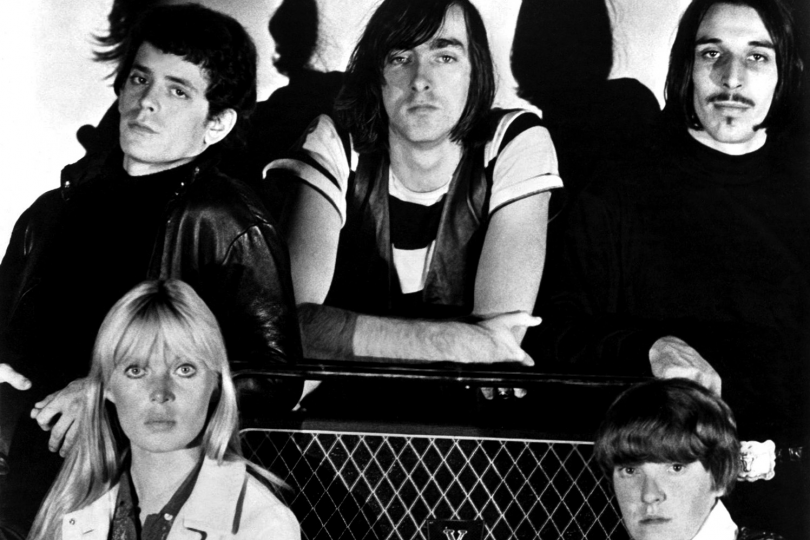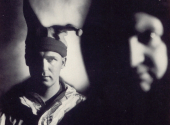
Milestones in Music History #4: “Shiny, Shiny, Shiny Boots of Leather…” VU and the Factory
Noise Music; Barret; Suicide; Velvet Underground; Desert Rock; the history of music is a perilous and yet appeasing path to walk. It has been, since the very origin of times, this powerful gift—and music is possibly the most evolving and sophisticated form of art, which affected culture, lifestyle, society, the history itself. Here the purpose is to delight you with some of the pivotal moments in music, some acts, facts, and records which delineated and shaped the music for the years to come (actually as far as this series could go on). I have selected a few, based on my personal path through music culture, and because I firmly believe these moments radically changed everything. Today we will take a leap into the fascinating and luxurious universe of one of the greatest bands in the history of music: The Velvet Underground.
The Velvet Underground wasn't always The Velvet Underground. Lewis Allan Reed, a.k.a. Lou Reed, born and raised in NYC, had begun his pathway into the music working for the label Pickwick Records as a songwriter, and had formed a few and not very successful garage bands. The meeting with John Cale came as a revelation. Cale, a Welshman who moved to New York to study classical music, had the fortune to work with talented and well-known experimental composers like Cornelius Cardew, John Cage, and La Monte Young. In particular, John Cale took deep inspiration from the use of extended drones.
The purpose of the first group formed by Cale and Reed, The Primitives, was to publish budget-priced records and support the publication of the single written by Lou Reed, “The Ostrich”, in which Cale added the viola. The song, probably written in reference to the fact that oyster feathers were starting to be fashionable among women in those years, in a derisive and parodic tone reconstructs the dance music scenario. The scornful tone of the song is emphasized, apart from the lyrics (“It's gonna knock you dead when you come upside your head, you gettin' ready?”), also from the choice of tuning all the guitars on one note, and letting them play endlessly as drones.
Reed and Cale eventually recruited also Sterling Morrison as an additional guitarist and Angus MacLise at the drums. The band thus formed first changed their name to Warlocks, and later to Falling Spikes.
But in 1963 Michael Leigh wrote a book that was quite successful and popular and was intended for the mass market. The Velvet Underground analyzes and reports unconventional and deviant sex practices, through the presentation of sources (ads, advertisements, clubs) where "abnormal" sex is solicited.
Through the sources, the author is then able to get in touch with advertisers. Angus MacLise suggested adopting this name, which was immediately greeted with great enthusiasm by the other members of the band. The name also fit perfectly, because Lou Reed had written a song entitled "Venus in Furs", which celebrated unconventional love, especially the sadomasochistic relationship between a "servant" and his "mistress". The opening of the song is eloquent: “Shiny, shiny, shiny boots of leather/ Whiplash girl child in the dark/ Comes in bells, your servant, don't forsake him/ Strike, dear mistress, and cure his heart”.
Here too is another important literary reference: in fact, Venus in Furs was a book written by Leopold von Sacher-Masoch in 1870, and it is the epistolary communication between a sexual "servant" and his mistress.
With the change of drummer when Angus MacLise left the band and was replaced by Maureen "Moe" Tucker, despite Cale's objections, the band assumed its official lineup. In 1965 a meeting took place that changed the history of the group. Barbara Rubin, American filmmaker and performance artist, introduced Andy Warhol to The Velvet Underground, and so Andy became their manager and their nominal producer. He also suggested to include in the band the German-born singer Christa Päffgen, a.k.a. Nico, at least for some songs. In 1967 The Velvet Underground & Nico was released. The album, in its apparent structural simplicity, is actually quite complex: sudden changes in tones and variations, changes of speed, improvisations, and the creation of dark and even gruesome atmosphere, strident violins, and dissonant guitars. A fantastic confusion.
The cover is also somehow irreverent: in some special issues of the album, you can literally peel the banana on the cover, which reveals an electric pink body. The album has enormous success, also and perhaps above all to be produced and advertised by Warhol, who had created with his Factory an entire entourage of artists of different types, and interested in various forms of art.
The Factory was a forge of art and seemed at the same time a meeting place for the misfits. Smelly, dark, populated by artists of any kind who found themselves together sharing the same experience. Somebody could also describe this place as “a medieval court of lunatics”.
But it is thanks to the entourage created by Andy Warhol that The Velvet Underground achieved immediate success. Their entire remaining career in the group is, starting with this first masterpiece, downhill, but eventually, the individual members succeeded in their solo careers. Today the Velvet Underground remains one of the most transgressive and irreverent groups in the history of music. The combination of sexuality (the most extreme and perverse) with music, the experimentation without filters, the unconventionality, the dark and horrifying spirit of contemporary society, all emerges from their music and their performances.
Their way of interpreting music and their artistic conception is influential for most of our contemporary music. The legacy they left is enormous, and their avant-garde and innovative music keeps inspiring contemporary musicians, as well as other artists. The spiciness of their language and their provocative performances changed completely, and radically, the concept of music itself.
In the next episode, we will see how the experimentation and provocation perpetrated by The Velvet Underground triggers a real musical and social revolution. We will see punk music through the experience of one of the most extreme groups in the punk universe: Fear.
How do you think The Velvet Underground and Andy Warhol changed our modernity? And up to what extent do you think sex is relevant in music?
Leave us your opinion in the comments below!
If you have found an error or typo in the article, please let us know by e-mail info@insounder.org.





